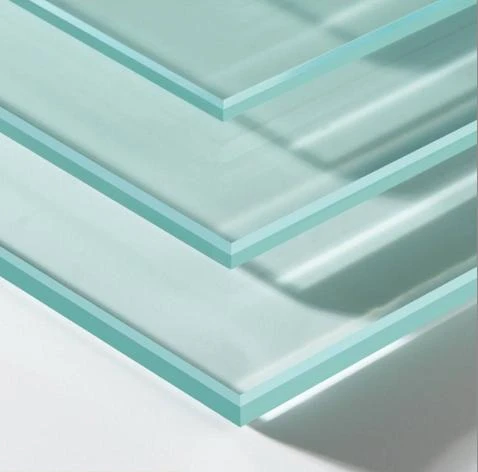The Art and Science of Glass Tempering
Glass has been an integral part of architecture and design for centuries, offering both aesthetic beauty and functional utility. One of the most significant advancements in the glass industry is the process of glass tempering. This transformative technique enhances the strength and safety of glass, making it suitable for a myriad of applications, from skyscraper windows to car windshields.
Glass tempering, also known as toughening, involves heating glass to a temperature of around 600 degrees Celsius (1112 degrees Fahrenheit) and then rapidly cooling it. This process is critical as it alters the internal structure of the glass, increasing its strength significantly compared to standard, non-tempered glass. While regular glass can be up to six times weaker, tempered glass boasts enhanced durability, making it less likely to break under stress or impact.
The science behind glass tempering centers on the principle of compressive and tensile stresses. When glass is heated, its molecules become mobile, allowing for rearrangement. Rapid cooling, or quenching, sets the outer surface of the glass before the interior can cool down, creating a state of compressive stress on the surface. This structure means that when tempered glass does break, it shatters into small, blunt pieces rather than sharp shards, significantly reducing the risk of injury.
The applications of tempered glass are vast and varied. In construction, it is used for storefronts, curtain walls, and shower doors, providing safety and elegance. The automotive industry relies heavily on tempered glass for windows and windshields, which not only enhance passenger safety but also improve vehicle aesthetics. Additionally, tempered glass finds its way into the production of glass doors, table tops, and partitions in modern homes and offices.
glass tempering
While the benefits of tempered glass are clear, the process requires precise control and expertise. The quality of the glass, the heating and cooling cycles, and the equipment used are all critical factors in ensuring the tempering process is successful. Advances in technology have brought about automated systems that monitor these variables closely, increasing efficiency and product quality.
In recent years, sustainability has become a critical consideration in the glass industry. Many manufacturers are now implementing eco-friendly practices in the production of tempered glass, such as utilizing recycled materials and reducing energy consumption during the tempering process. These initiatives not only improve the environmental footprint of glass manufacturing but also cater to the growing demand for sustainable building materials.
The evolution of glass tempering reflects the broader trends in technology, design, and environmental responsibility within the industry. As architects and designers continue to push the boundaries of creativity, tempered glass will undoubtedly play a pivotal role in realizing their visions, offering safety and style in equal measure.
In conclusion, glass tempering is a fascinating intersection of art and science. It enhances the strength and safety of glass, making it indispensable in contemporary construction and design. As techniques evolve and sustainability becomes a priority, the future of tempered glass looks promising, promising to inspire innovation and elegance in buildings around the world.
 Afrikaans
Afrikaans  Albanian
Albanian  Amharic
Amharic  Arabic
Arabic  Armenian
Armenian  Azerbaijani
Azerbaijani  Basque
Basque  Belarusian
Belarusian  Bengali
Bengali  Bosnian
Bosnian  Bulgarian
Bulgarian  Catalan
Catalan  Cebuano
Cebuano  Corsican
Corsican  Croatian
Croatian  Czech
Czech  Danish
Danish  Dutch
Dutch  English
English  Esperanto
Esperanto  Estonian
Estonian  Finnish
Finnish  French
French  Frisian
Frisian  Galician
Galician  Georgian
Georgian  German
German  Greek
Greek  Gujarati
Gujarati  Haitian Creole
Haitian Creole  hausa
hausa  hawaiian
hawaiian  Hebrew
Hebrew  Hindi
Hindi  Miao
Miao  Hungarian
Hungarian  Icelandic
Icelandic  igbo
igbo  Indonesian
Indonesian  irish
irish  Italian
Italian  Japanese
Japanese  Javanese
Javanese  Kannada
Kannada  kazakh
kazakh  Khmer
Khmer  Rwandese
Rwandese  Korean
Korean  Kurdish
Kurdish  Kyrgyz
Kyrgyz  Lao
Lao  Latin
Latin  Latvian
Latvian  Lithuanian
Lithuanian  Luxembourgish
Luxembourgish  Macedonian
Macedonian  Malgashi
Malgashi  Malay
Malay  Malayalam
Malayalam  Maltese
Maltese  Maori
Maori  Marathi
Marathi  Mongolian
Mongolian  Myanmar
Myanmar  Nepali
Nepali  Norwegian
Norwegian  Norwegian
Norwegian  Occitan
Occitan  Pashto
Pashto  Persian
Persian  Polish
Polish  Portuguese
Portuguese  Punjabi
Punjabi  Romanian
Romanian  Russian
Russian  Samoan
Samoan  Scottish Gaelic
Scottish Gaelic  Serbian
Serbian  Sesotho
Sesotho  Shona
Shona  Sindhi
Sindhi  Sinhala
Sinhala  Slovak
Slovak  Slovenian
Slovenian  Somali
Somali  Spanish
Spanish  Sundanese
Sundanese  Swahili
Swahili  Swedish
Swedish  Tagalog
Tagalog  Tajik
Tajik  Tamil
Tamil  Tatar
Tatar  Telugu
Telugu  Thai
Thai  Turkish
Turkish  Turkmen
Turkmen  Ukrainian
Ukrainian  Urdu
Urdu  Uighur
Uighur  Uzbek
Uzbek  Vietnamese
Vietnamese  Welsh
Welsh  Bantu
Bantu  Yiddish
Yiddish  Yoruba
Yoruba  Zulu
Zulu 

